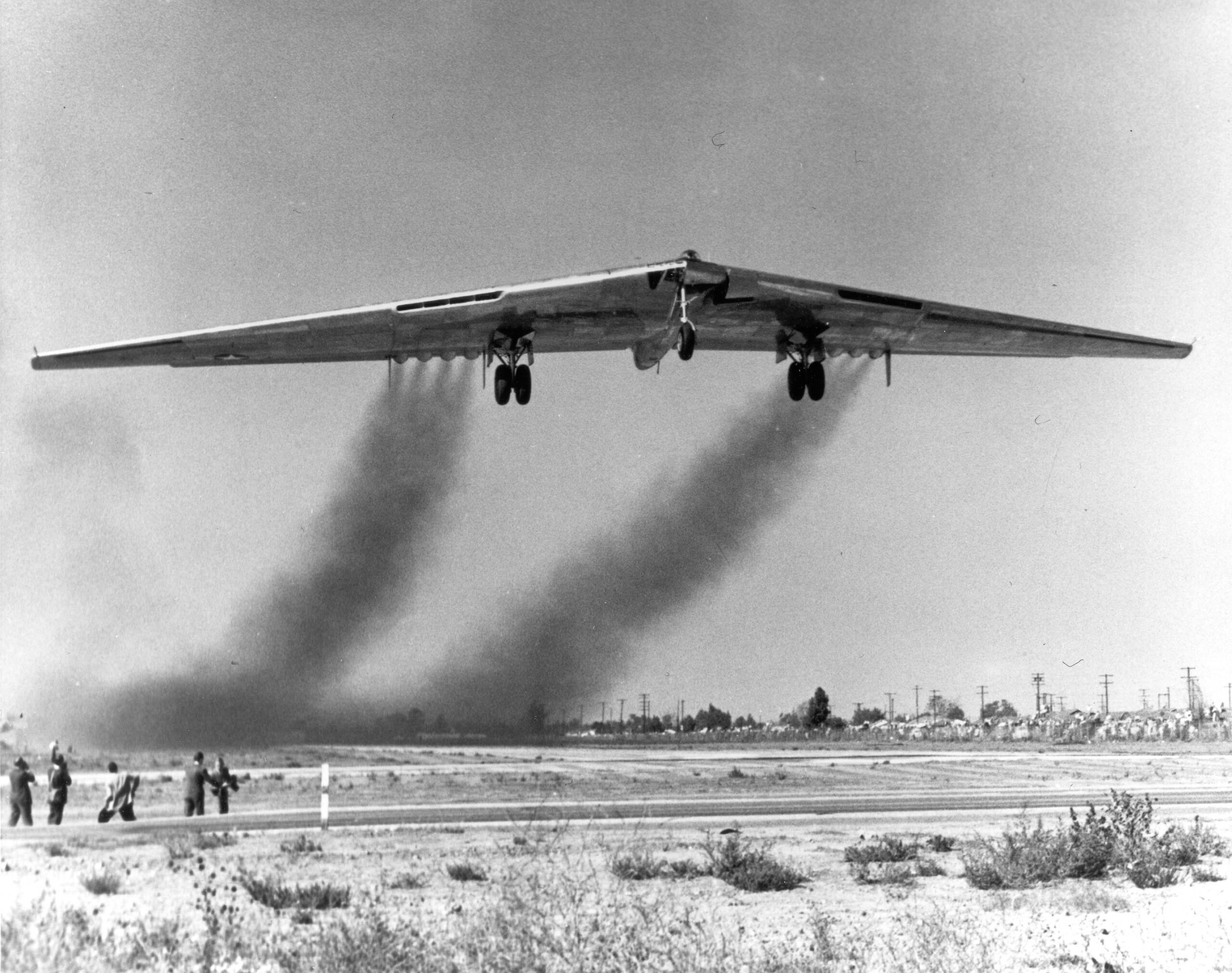
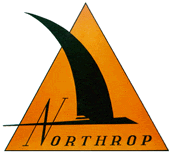
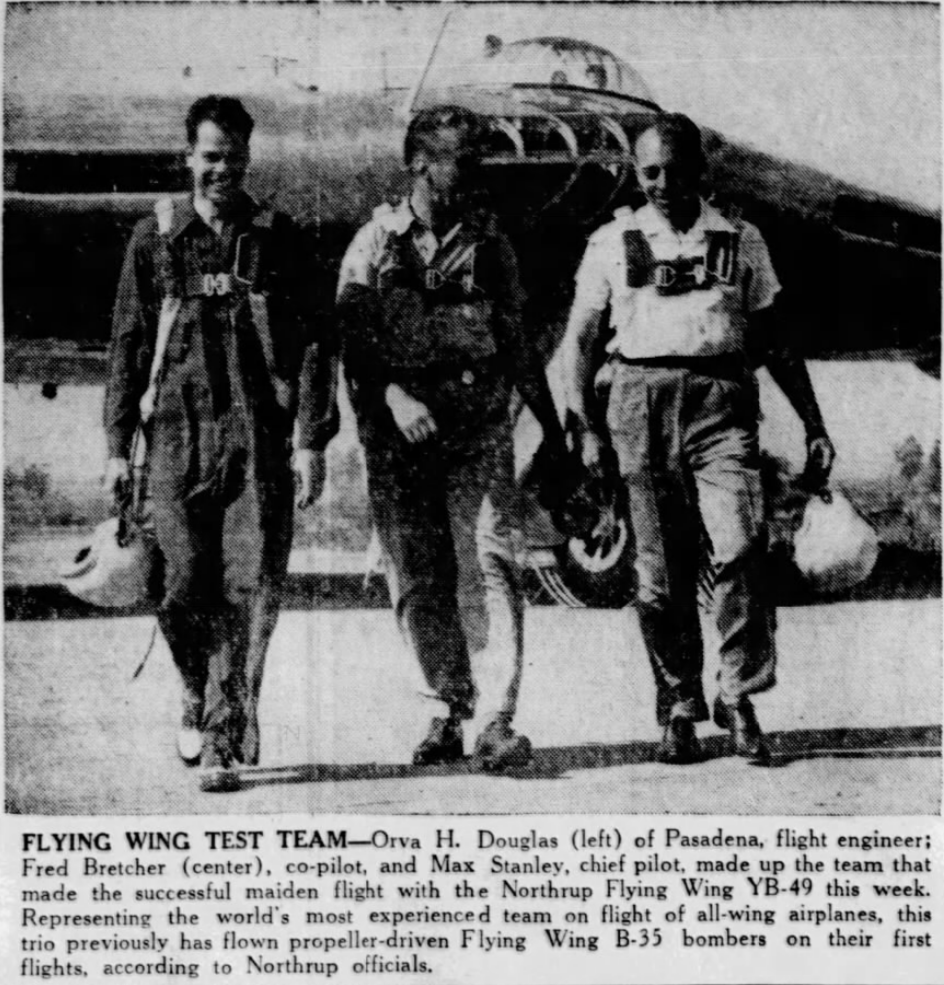
An estimated 4,000 spectators lined the streets surrounding Northrop Field. The YB-49 was escorted by a Lockheed P-80A Shooting Star and a Northrop P-61 Black Widow as it climbed to 10,000 feet (3,048 meters) en route to Muroc. Over Lancaster, California, the P-61 caught fire and was abandoned by its crew.
42-102367 had been converted from the second YB-35 pre-production test aircraft. The original Flying Wing’s four Pratt & Whitney Wasp Major (R-4360-21) radial engines were replaced by turbojet engines and several aerodynamic improvements were made.
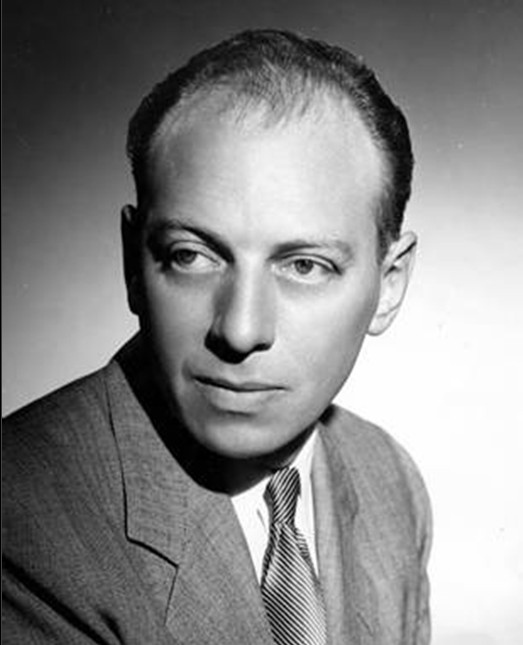
The YB-49 was a very unusual configuration for an aircraft of that time. There was no fuselage or tail control surfaces. The crew compartment, engines, fuel, landing gear and armament were contained within the wing. Air intakes for the turbojet engines were placed in the leading edge and the exhaust nozzles were at the trailing edge. Four small vertical fins for improved yaw stability were also at the trailing edge.
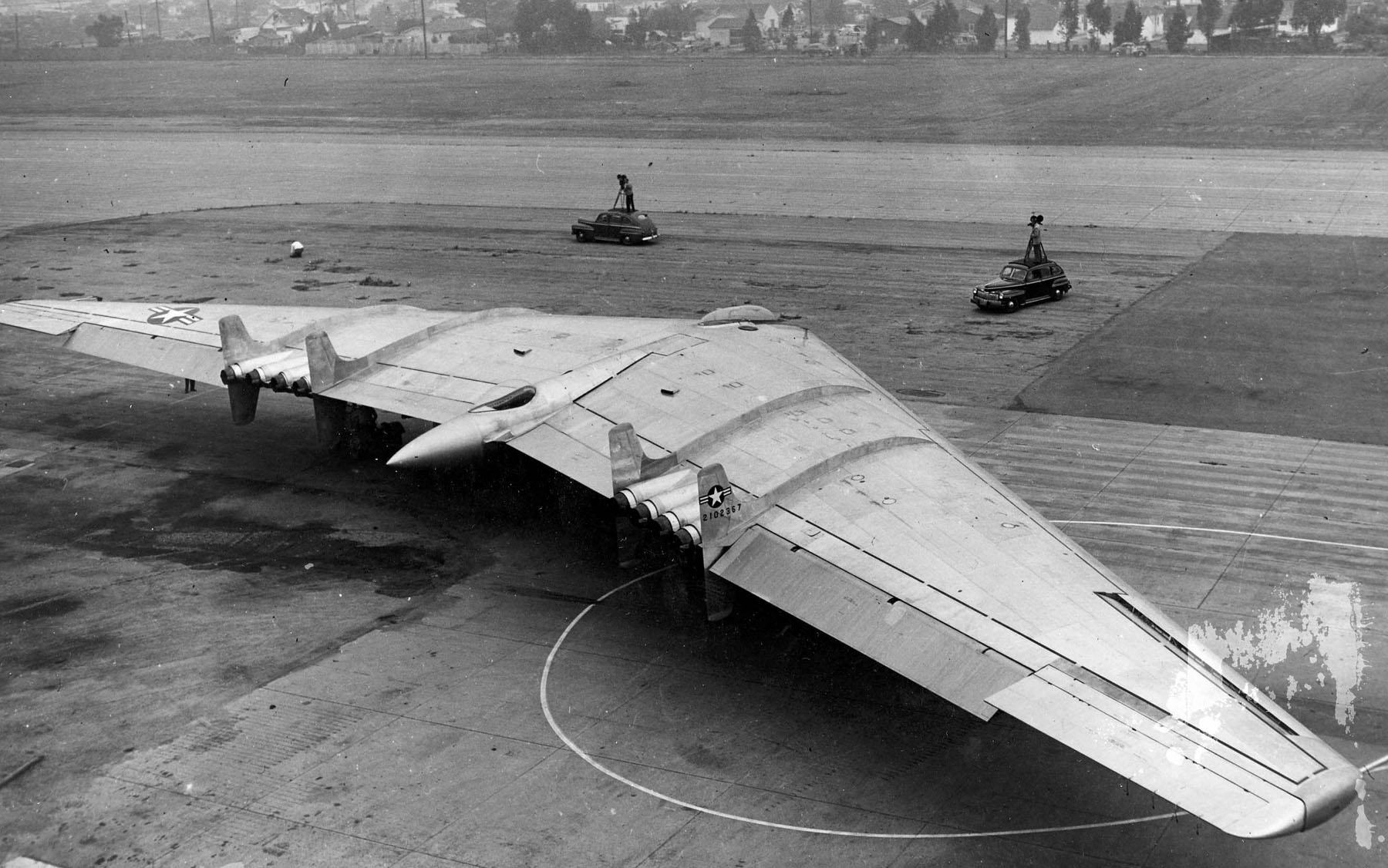
The YB-49 had a length of 53 feet, 1 inch (16.180 meters), wingspan of 172 feet (52.426 meters) and overall height of 15 feet, 2 inches (4.623 meters). It weighed 88,442 pounds (40,117 kilograms) empty and its Maximum Takeoff Weight (MTOW) was 193,938 pounds (87,969 kilograms).
The Wing defined the airplane. The leading edge was swept aft 26° 57′ 48″, and the trailing edge, 10° 15′ 22″. The wing’s total area was 4,000 square feet (371.6 square meters). It had an aspect ratio of 7.4:1. At the root, the chord was 37 feet, 6 inches (11.430 meters), tapering to 9 feet, 4 inches (2.844 meters) at the tip. There was 0° angle of incidence at the root, -4° at the wing tips, and 0° 53′ dihedral.
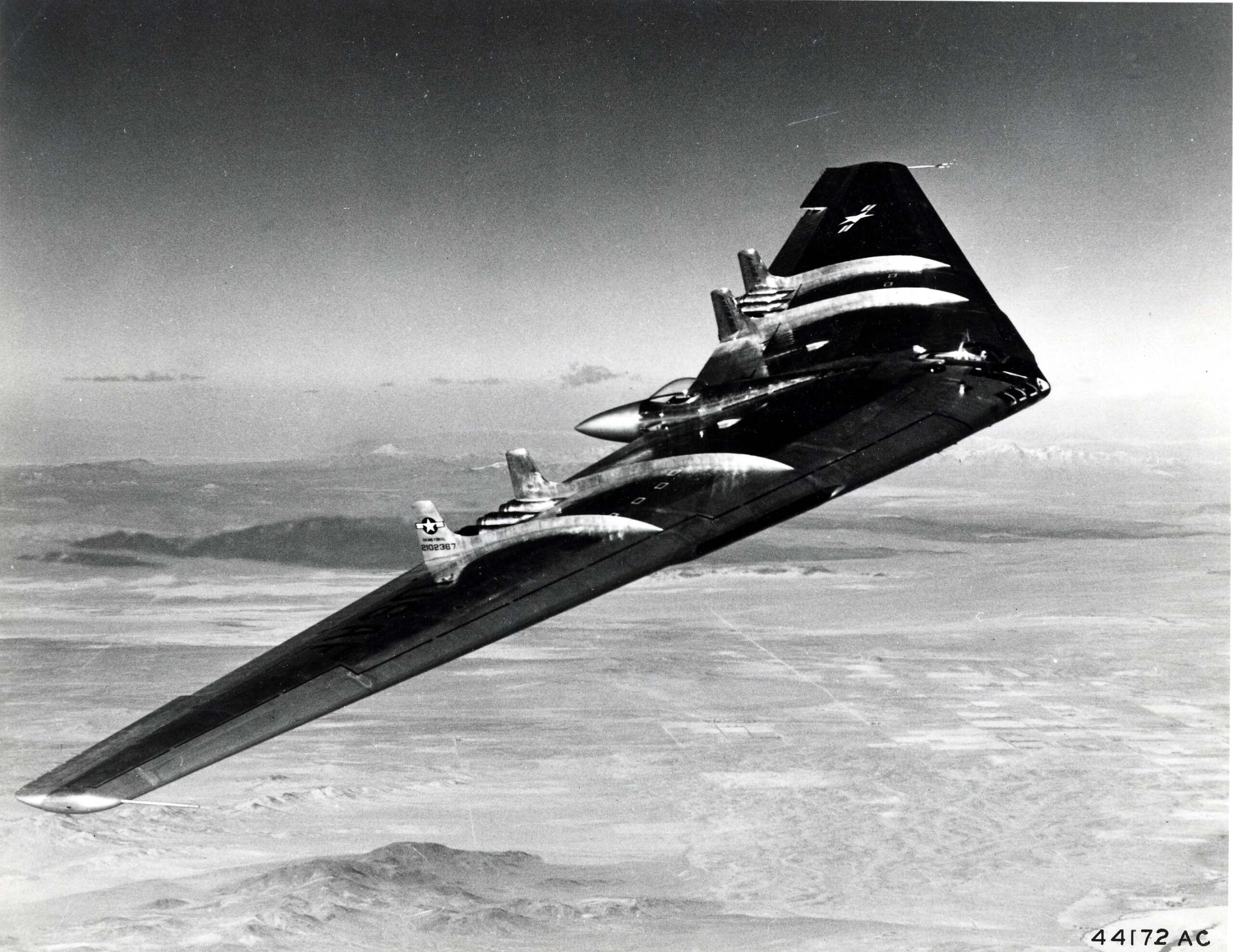

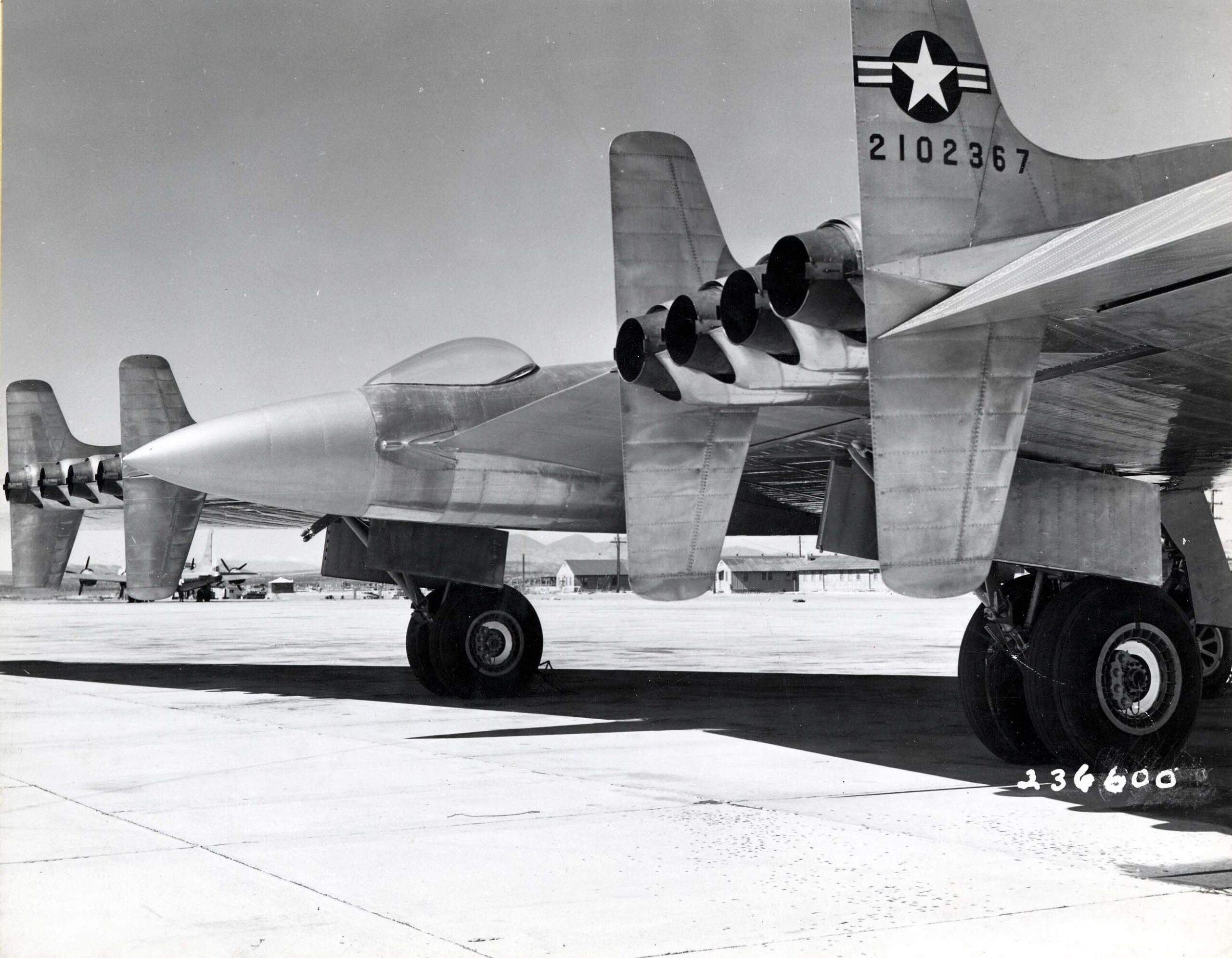
During testing the YB-49 reached a maximum speed of 428 knots (493 miles per hour/793 kilometers per hour) at 20,800 feet (6,340 meters). Cruise speed was 365 knots (429 miles per hour/690 kilometers per hour). The airplane had a service ceiling of 49,700 feet (15,149 meters). The YB-49 had a maximum fuel capacity of 14,542 gallons (55,047 liters) of JP-1 jet fuel. Its combat radius was 1,403 nautical miles (1,615 statute miles/2,598 kilometers).
The maximum bomb load of the YB-49 was 16,000 pounds (7,257 kilograms), though the actual number of bombs was limited by the volume of the bomb bay and the capacity of each bomb type. While the YB-35 Flying Wing was planned for multiple machine gun turrets, the YB-49 carried no defensive armament.
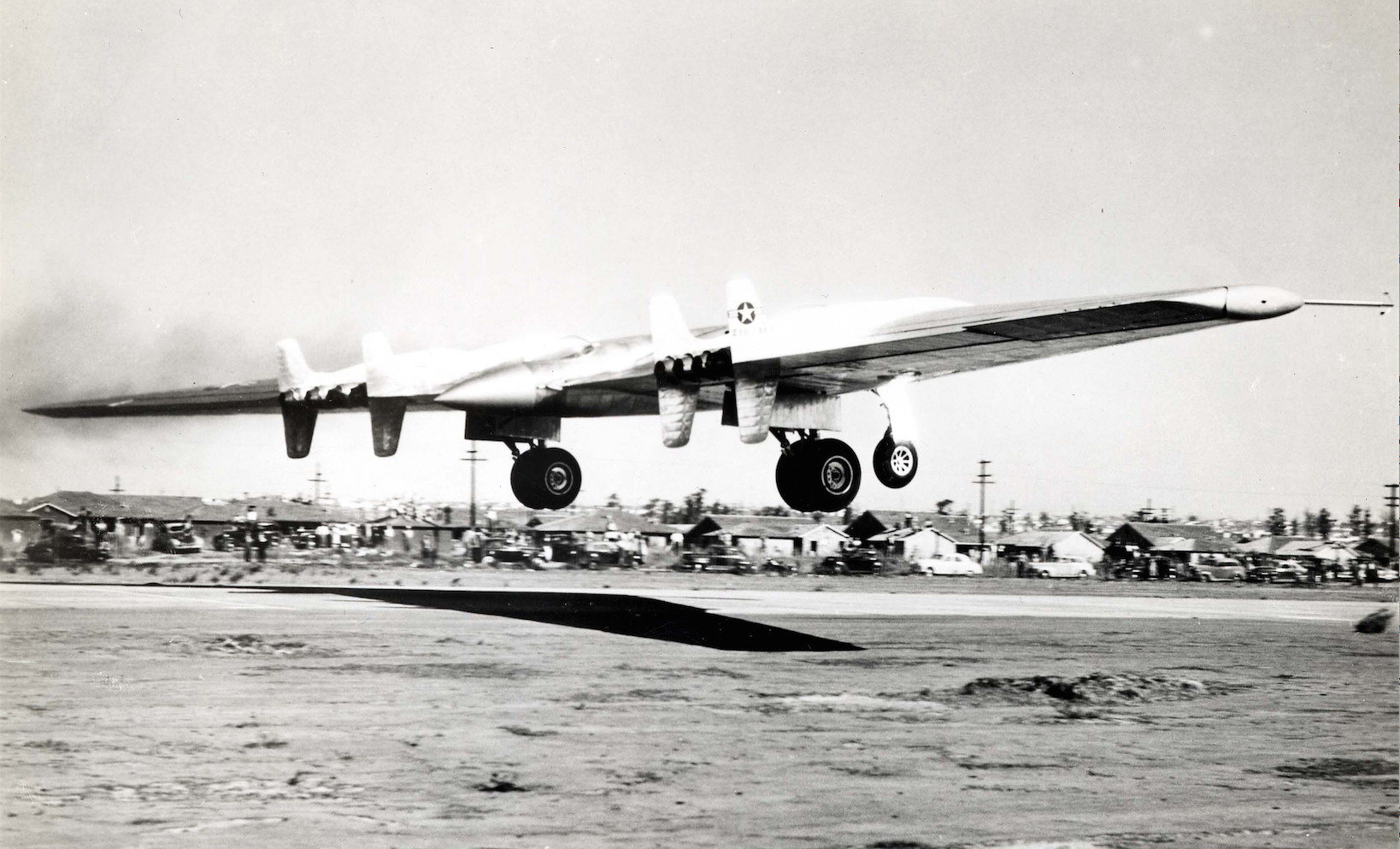
Only two Northrop YB-49s were built and they were tested by Northrop and the Air Force for nearly two years. Though an additional nine YB-35s were ordered converted, the B-49 was not placed into production.
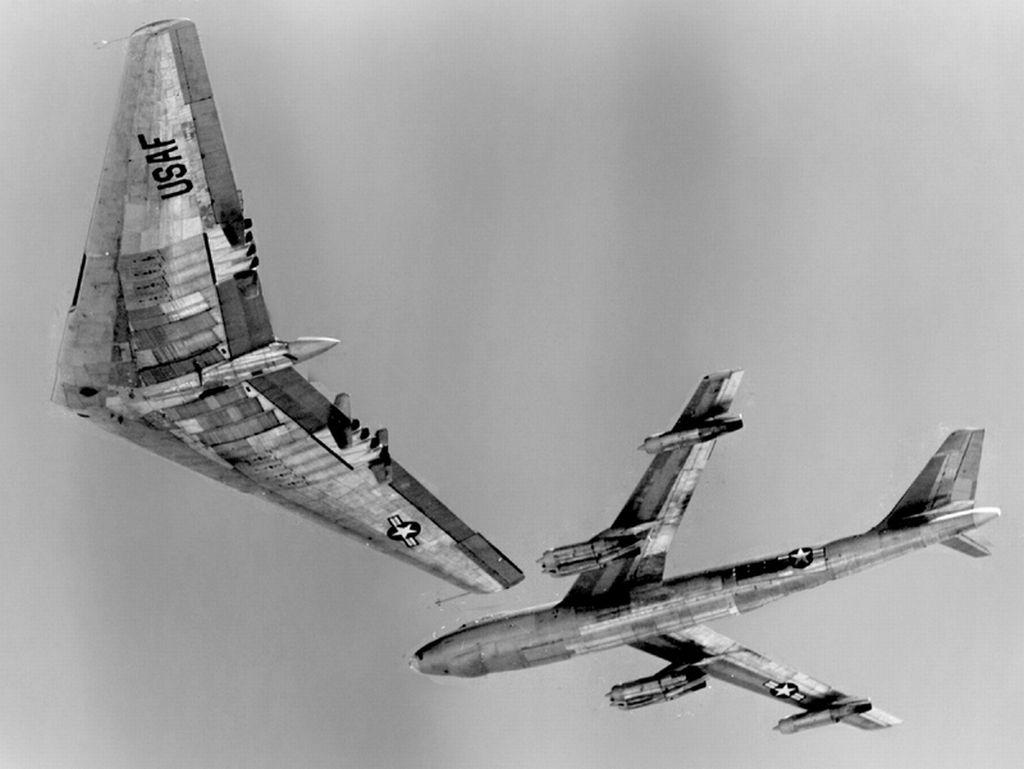
The second ship, YB-49 42-102368, disintegrated in flight during a test flight north of Muroc Air Force Base, 5 June 1948, killing the entire crew, which included Captain Glen Edwards. The name of Muroc was changed to Edwards Air Force Base in his honor.
YB-49 42-102367 was destroyed by fire following a taxiing accident at Edwards, 15 March 1950. The program was cancelled on the same day.
© 2024, Bryan R. Swopes